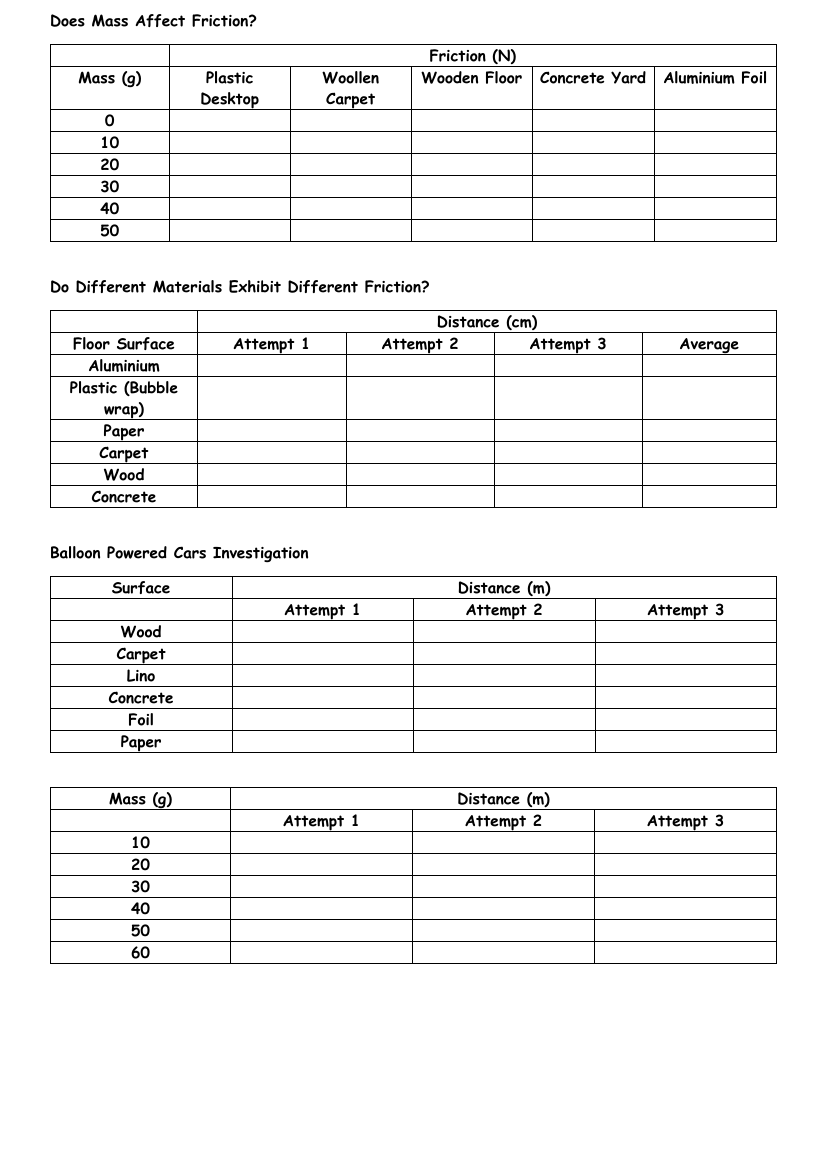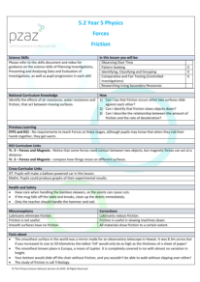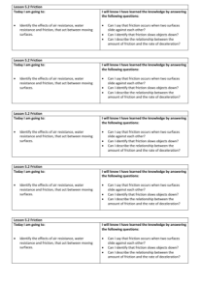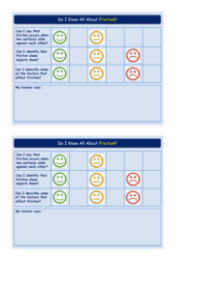Friction - Results Tables

Science Resource Description
The investigation into whether mass affects friction is meticulously chronicled through a series of results tables. These tables detail the frictional force, measured in Newtons (N), against varying masses, recorded in grams (g), across different surfaces such as plastic desktops, woollen carpets, wooden floors, concrete yards, and aluminium foil. The data is arranged to show how the frictional force changes as the mass increases from 0 to 50 grams. This setup allows for a clear analysis of the relationship between mass and the amount of friction experienced on different materials.
Another aspect of the study explores the frictional differences across various materials. Here, the distance, measured in centimetres (cm), that an object travels is recorded over three attempts, along with the calculated average distance. The surfaces tested include aluminium, bubble wrap, paper, carpet, wood, and concrete. Additionally, there's an inquiry into the performance of balloon-powered cars, where the distance travelled by the cars, measured in metres (m), is noted over three attempts on surfaces such as wood, carpet, lino, concrete, foil, and paper. This part of the investigation also examines the effect of mass on the distance travelled, with masses ranging from 10 to 60 grams. These comprehensive observations provide insight into how both mass and surface material can influence the amount of friction encountered.






